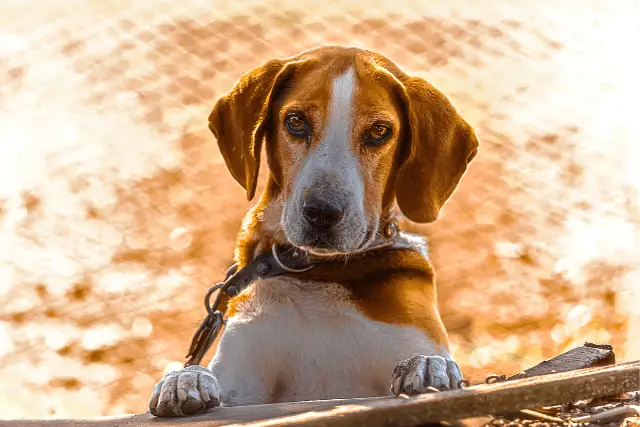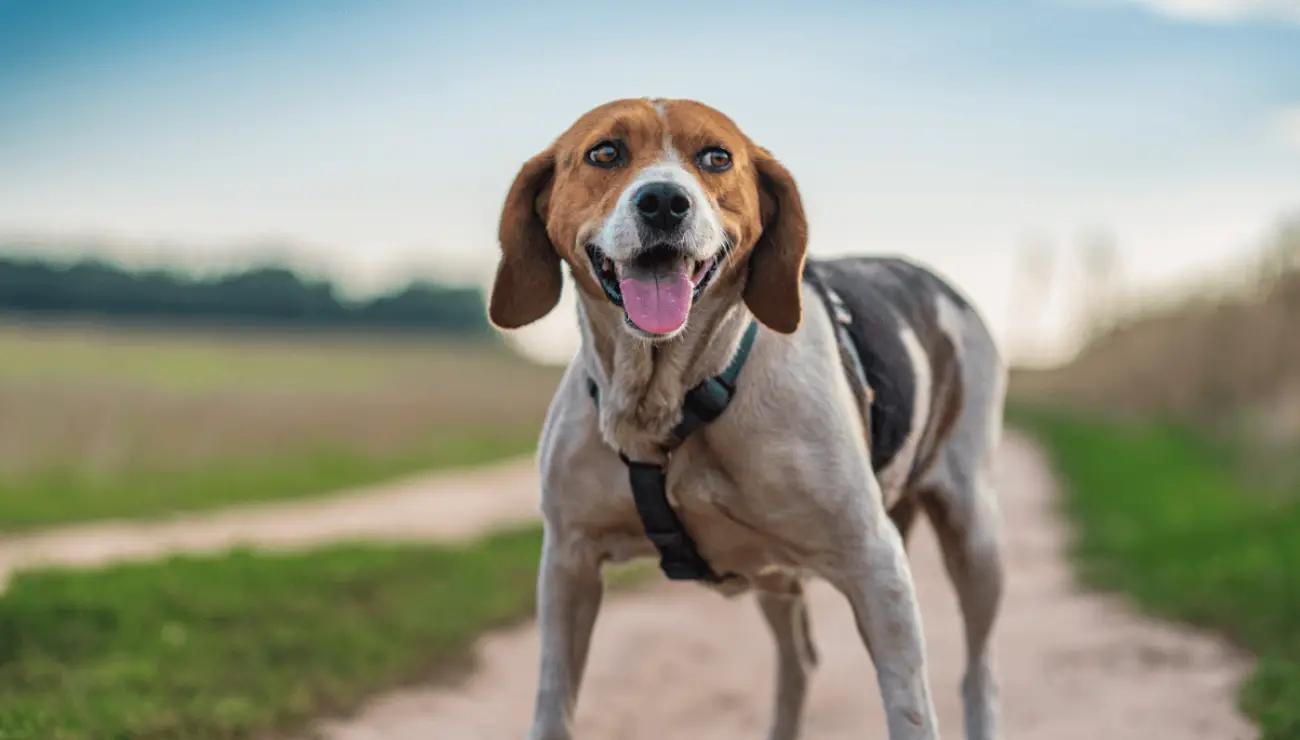Estonian Hound
The Estonian Hound (Eesti Hagijas) is a friendly medium-sized dog. The Estonian Hound carries the title ‘National Dog of Estonia’ because he is the only native Estonian dog breed. He has a strong resemblance to the Beagle. The Estonian Hound has a muscular body and a strong bone structure. They are good family dogs with a sweet temperament.
If you socialize them right, they can get along with other pets. The Estonian Hounds are alert and good watchdogs. In 2019 Estonian Hound was officially recognized by the FCI.

Height:
17–21 in (42–52 cm)

Weight:
33-44 lb (15-20 kg)

Origin:
Estonia

Life Expectancy:
12-15 years
Dog Breed Characteristics
Grooming
Estonian Hounds has a short, harsh, and glossy coat that requires proper care for this dog to look good. They need regular weekly brushing that will help them get rid of dead hair. Their coat sheds moderately all year, but twice a year (during the shedding season in spring and fall), they blow their entire coat. During that period, daily brushings will help you control the mess and help your dog through the heavy shedding period.
Estonian Hound coat colors:
- Black patches with tan markings and vivid white markings
- Lemon to golden tan patches are allowed
Estonian Hounds will also need other basic care; brush their teeth at least three times a week. Check their ears for signs of infection and redness, bathe them regularly, and trim their nails if they don’t wear them down naturally.

Exercise
This is a high-energy dog that requires daily activity to spend his energy. Estonian Hound will enjoy all the fun activities such as long walks, hiking, canine sports, or just playing with his owner. To make this dog happy, you must devote your time to playing sessions if you don't want him to develop behavior problems. They will become bored and destructive if they don't spend all their energy outside.
Training
Training such an intelligent dog breed is essential for preventing the development of bad behavioral traits. Start training them as soon as they arrive at your house, and if you do not have time to work with such an active breed, maybe it is not the best choice for you.
If you are interested in properly training your Estonian Hound and are unsure where to start, you can always ask professionals for help. Most dog breeds do not take well harsh training methods and techniques, and the Estonian Hound is one of them. You should make training sessions exciting, and you will start noticing great results in a matter of hours.

Personality
Like any other dog breed, even Estonian Hound requires early socialization. It is essential to ensure your dog doesn’t become shy or aggressive. Expose your dog to different people, sights, and situations to secure a well-rounded dog.
Estonian Hounds have a high prey drive, and even with the right training and socialization, these dogs cannot resist going after a rabbit or squirrel. They can adapt to any environment as long as you secure them with plenty of physical and mental activity.
Estonian Hound and children
Early socialization and proper training can teach them to behave even when children are around. Estonian Hounds can play for hours upon hours without getting tired or bored. Children should never be left alone with any dog, no matter what breed it might be.
You should make sure that your children understand how to approach dogs of this breed and that they understand how to properly interact and play with them.

Estonian Hound and other pets
These dogs can get along well with other dogs and can enjoy their company. Estonian Hounds are not the best fit for other pets. They have a strong prey drive, so they will most likely try and catch smaller animals such as gerbils, hamsters, squirrels, or rabbits. They can learn to get along with the pets they are raised with, but our advice would be never to leave them unattended.
Health
Like any other dog breed, the Estonian Hound can potentially develop health problems. If you are buying this dog, ensure the breeder can provide you with the necessary health tests and guarantees. Always ask to see the results of tests from the puppy’s parents. The health problems these dogs are associated with are:
The Estonian Hound is generally considered a very healthy breed that can live 12-15 years.
- Hip dysplasia - Genetic problem affecting hips resulting from an improperly formed hip joint.
- Progressive Retinal Atrophy - Group of diseases that affect the retina and cause it to deteriorate over time.
- Allergies
- Obesity
- Entropion - A defect causing the eyelid to roll inward.
- Ectropion - A defect causing the eyelid to roll out or sag.

Estonian Hound Breeders
If this breed is a good fit for you and/or your family, make sure that you find a registered and reputable Estonian Hound breeder that can provide you with a great dog that will be physically and mentally healthy. Ask the breeder to show you the health certificates of his breeding dogs and if you can, try and see what the puppy’s parents look like.
This is a newly recognized dog breed, and it is not popular around the world. Mostly you can find them in their native land – Estonia. And if you decide that this is the right dog for you, be prepared that you will end up on the waiting list.
World Dog Finder team

Updated at31.08.2023.
Breed History
This is a relatively young dog breed originating from Estonia. They were developed because the Ministry of Agriculture and Economy ordered that large hound dogs need to be replaced with smaller ones because they were destroying Estonia wildlife. Because of that, they created a smaller, agile, and hard-driven breed that gained massive popularity from the start in their native land.

















Share